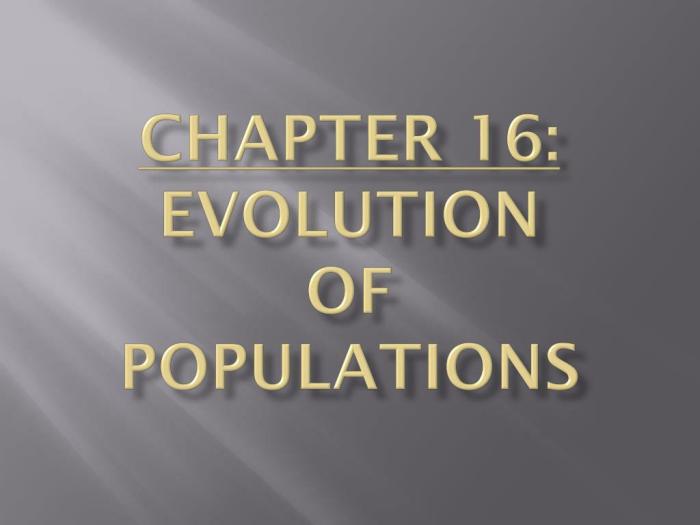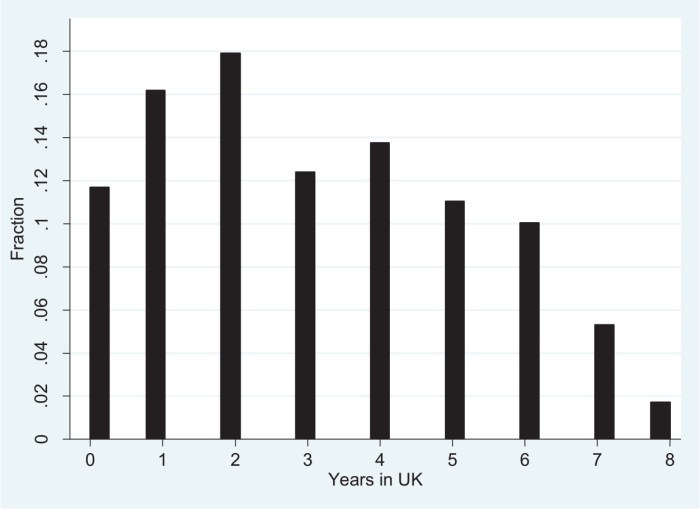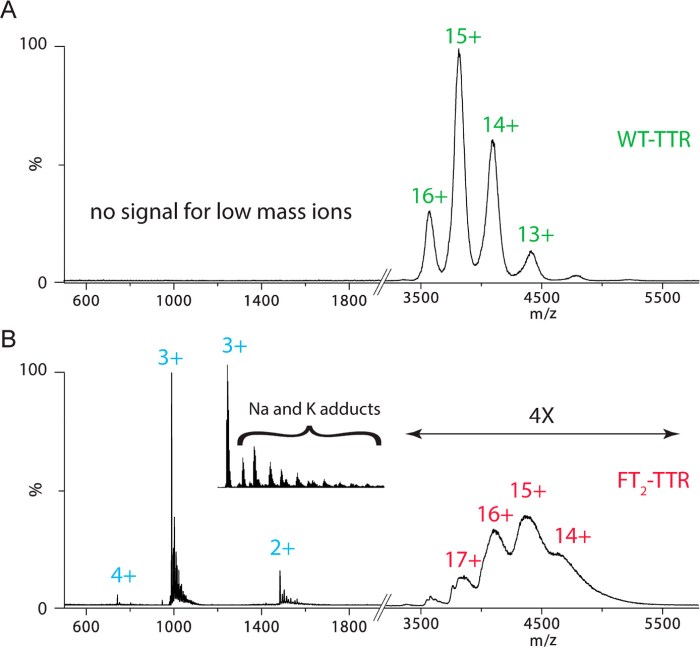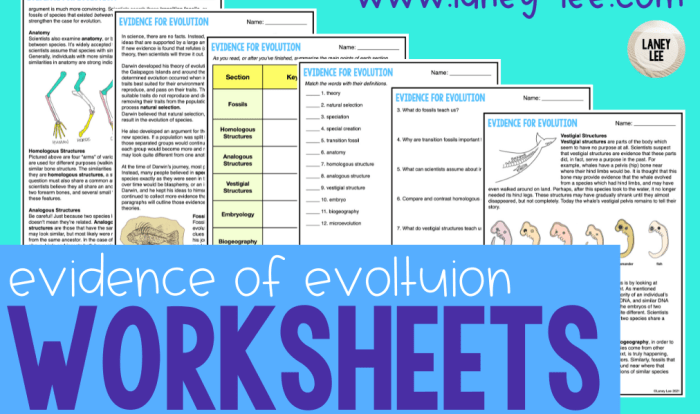Chapter 16 Evolution of Populations Answer Key unveils the intricacies of evolutionary processes within populations, offering a comprehensive exploration of the mechanisms that shape genetic variation and drive evolutionary change. This chapter delves into the fundamental concepts of evolution, natural selection, genetic drift, gene flow, mutation, and non-random mating, providing a thorough understanding of how these forces interact to mold the genetic composition of populations over time.
Throughout this chapter, we will examine the role of genetic variation in population evolution, exploring the impact of genetic drift on population genetic diversity, and investigating the factors that influence gene flow between populations. We will also delve into the mechanisms of mutation and non-random mating, uncovering their contributions to the creation and alteration of allele frequencies within populations.
Evolution of Populations: Chapter 16 Evolution Of Populations Answer Key

Evolution refers to the gradual change in the genetic composition of a population over time. It occurs within populations due to natural selection, genetic drift, gene flow, mutation, and non-random mating.
Natural Selection
- Favors individuals with traits that enhance their survival and reproduction in a given environment.
- Leads to the accumulation of advantageous alleles in the population.
- Types include:
- Directional selection: Favors extreme values of a trait.
- Stabilizing selection: Favors intermediate values of a trait.
- Disruptive selection: Favors both extreme values of a trait.
Genetic Variation
Provides the raw material for evolution by introducing new alleles into the population.
Sources of genetic variation include:
- Mutation
- Gene flow
- Non-random mating
Genetic Drift
Random changes in allele frequencies due to chance events.
Can lead to the loss of genetic variation, especially in small populations.
Types of Genetic Drift
- Bottleneck effect: A sudden reduction in population size.
- Founder effect: The establishment of a new population by a small number of individuals.
Examples of Genetic Drift
- Loss of alleles due to the extinction of individuals carrying those alleles.
- Changes in allele frequencies due to the random sampling of gametes during reproduction.
Gene Flow
The transfer of alleles between populations.
Can introduce new alleles into a population and increase genetic variation.
Factors Influencing Gene Flow
- Distance between populations
- Migration rates
- Reproductive isolation
Examples of Gene Flow
- Migration of individuals between populations.
- Pollen dispersal between plant populations.
Mutation
Random changes in the DNA sequence.
Can introduce new alleles into a population and increase genetic variation.
Types of Mutation
- Point mutations: Changes in a single nucleotide.
- Insertions: Addition of nucleotides to the DNA sequence.
- Deletions: Removal of nucleotides from the DNA sequence.
Examples of Mutation
- Sickle cell anemia: Caused by a point mutation in the hemoglobin gene.
- Tay-Sachs disease: Caused by a deletion in the HEXA gene.
Non-Random Mating
Mating patterns that deviate from random chance.
Can lead to changes in allele frequencies and the accumulation of specific genotypes in the population.
Types of Non-Random Mating
- Assortative mating: Mating between individuals with similar phenotypes.
- Disassortative mating: Mating between individuals with different phenotypes.
- Inbreeding: Mating between closely related individuals.
Examples of Non-Random Mating, Chapter 16 evolution of populations answer key
- Humans often choose mates with similar physical characteristics.
- Some plant species have self-fertilization, which is a form of inbreeding.
Expert Answers
What is the definition of evolution?
Evolution refers to the gradual change in the genetic composition of a population over time, resulting in the emergence of new traits and adaptations.
How does natural selection contribute to evolution?
Natural selection acts on heritable traits within a population, favoring individuals with traits that enhance their survival and reproductive success, leading to the gradual increase in the frequency of advantageous traits.
What is the role of genetic drift in evolution?
Genetic drift refers to the random fluctuation of allele frequencies within a population, particularly in small populations, and can lead to the loss of genetic variation or the fixation of certain alleles.
How does gene flow affect population evolution?
Gene flow involves the transfer of alleles between populations, introducing new genetic variation or altering existing allele frequencies, and can influence the genetic composition and adaptation of populations.
What is the significance of mutation in evolution?
Mutation is a source of new genetic variation within populations, creating novel alleles that can potentially provide adaptive advantages or contribute to the evolution of new traits.


